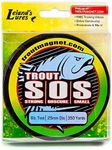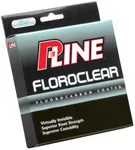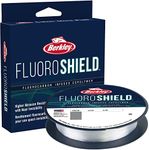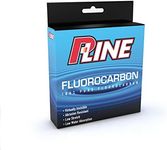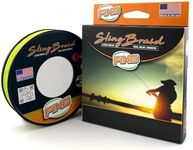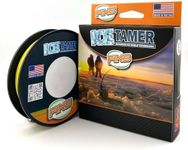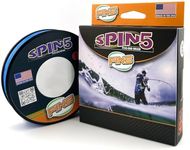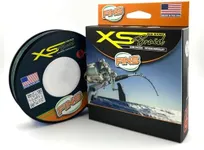Buying Guide for the Best Fishing Line For Trouts
Choosing the right fishing line for trout fishing is crucial for a successful and enjoyable experience. The right line can make a significant difference in your ability to catch trout, as well as in the overall feel and performance of your fishing setup. When selecting a fishing line, consider factors such as the type of water you'll be fishing in, the size of the trout you're targeting, and your personal fishing style. Here are some key specifications to consider when choosing a fishing line for trout fishing.Line Strength (Pound Test)Line strength, measured in pounds, indicates how much weight the line can handle before breaking. This is important because it determines the size of the fish you can catch without the line snapping. For trout fishing, a line strength of 2-8 pounds is typically sufficient. Lighter lines (2-4 pounds) are ideal for smaller trout and clearer waters, as they are less visible to the fish. Heavier lines (6-8 pounds) are better for larger trout or when fishing in areas with more obstacles. Choose a line strength based on the average size of trout in your fishing area and the conditions you'll be fishing in.
Line TypeThere are three main types of fishing lines: monofilament, fluorocarbon, and braided. Monofilament is versatile, easy to handle, and has good stretch, making it a popular choice for beginners. Fluorocarbon is nearly invisible underwater and has low stretch, which is great for clear water and detecting subtle bites. Braided line is extremely strong and has no stretch, but it is more visible and can be harder to handle. For trout fishing, monofilament and fluorocarbon are generally preferred. Choose monofilament for its ease of use and versatility, or fluorocarbon for its invisibility and sensitivity.
Line DiameterLine diameter refers to the thickness of the fishing line. Thinner lines are less visible to fish and allow for more natural bait presentation, which is important when targeting trout. However, thinner lines also have less strength. When choosing a line diameter, balance the need for invisibility with the required strength. For trout fishing, a line diameter of 0.005 to 0.010 inches is usually appropriate. Opt for a thinner line in clear waters and when targeting smaller trout, and a slightly thicker line in murkier waters or when targeting larger trout.
Line ColorThe color of the fishing line can affect its visibility underwater. Clear or low-visibility lines are generally preferred for trout fishing, as trout can be easily spooked by visible lines. Clear, green, or blue lines are good choices for most trout fishing situations. In very clear water, a clear or light blue line is ideal. In murkier water, a green line can blend in better with the surroundings. Choose a line color that matches the water conditions to increase your chances of success.
Abrasion ResistanceAbrasion resistance refers to the line's ability to withstand damage from rocks, debris, and other underwater obstacles. This is important because trout often inhabit areas with rocky bottoms or submerged structures. A line with good abrasion resistance will last longer and reduce the risk of breaking when fishing in these conditions. Monofilament and fluorocarbon lines generally offer good abrasion resistance, but some lines are specifically designed to be more durable. If you frequently fish in areas with a lot of obstacles, consider a line with higher abrasion resistance to ensure it can handle the environment.


